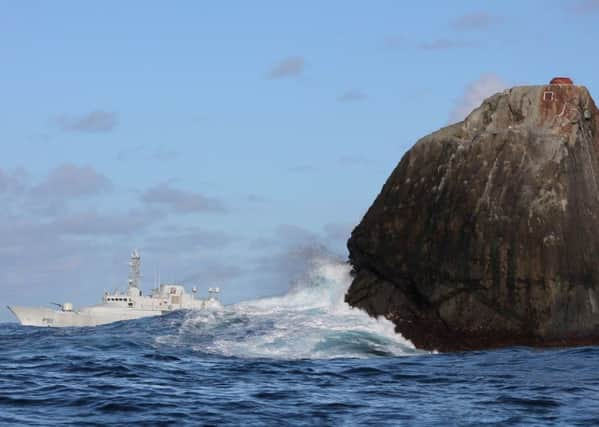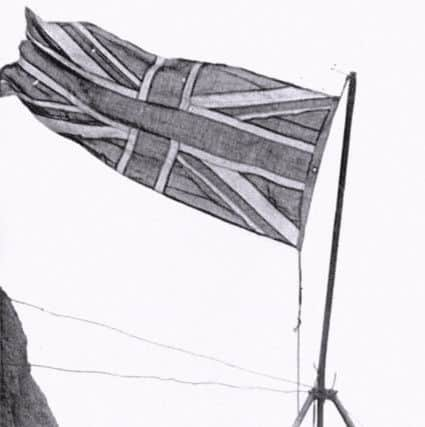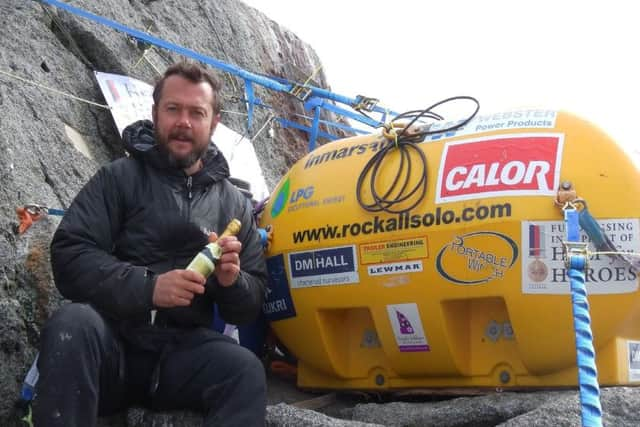When the British Empire claimed a new island for Scotland


This week in 1972, the desolate outcrop of Rockall was officially included in the District of Harris in Inverness-shire after a law was passed to recognise the island as part of Scotland and the United Kingdom.
Sitting 230 miles west of North Uist, this granite hulk is really only home to thousands of periwinkles and several new species of mollusc which have thrived due to hydrocarbons released from the surrounding sea bed.
Advertisement
Hide AdAdvertisement
Hide AdThe odd resting seabird may also be found here should the Atlantic storms abate for long enough, with the most hardened of adventurers also arriving occasionally on the island once described as “the most isolated small rock in the oceans of the world”.


While unforgiving and largely unappealing, Rockall was claimed by the British to protect national security against the Russians at a time when US nuclear missiles were being test launched from North Uist into the Atlantic.
Rockall also sits in a rich oil basin, with the UK, Ireland and Denmark claiming rights to explore. Dublin, to this day, does not recognise British sovereignty over the island.
British sovereignty was claimed in 1955 in an operation instructed by the Queen via the Admiralty, when several marines, equipped with a Union Flag and requisite mast, were winched down to the island from a helicopter. Newspaper reports of the day detailed the operation and the instructions delivered to Commander RH Connel, commanding officer of HMS Vidal, the nearby vessel from which the helicopter was launched.He was instructed by the Queen: “On arrival at Rockall you will effect a landing and hoist the Union Flag on whatever spot appears most suitable or practicable and you will then take possession of the island on our behalf. You will keep a record of your proceedings. When the landing has been effected and the flag hoisted you will cement a commemorative plaque on the rock.”
The marines arrived on Hall’s Ledge, a space measuring around 20 feet by six feet on the south side of the rock, which was named after the Royal Naval officer who landed on the island in 1811. It was anticipated that rockets would be required to scare birds away from the island as the annexation got under way but Rockall, according to accounts, was quiet of all life when the marines touched down.


A newspaper report of proceedings said: “The flagstaff was erected by 10 am and 16 minutes later the Union Flag was hoisted.”
The HMS Vidal, which had been in waters around half a mile away, then unleashed a 21-gun salute as the plaque was cemented in and ring bolts secured near the waterline to allow for further landings. Spikes were also driven into the rock 12 feet from sea level to help climbers.
The British takeover of Rockall has long been controversial. In 1977 the Irish Government officially laid claim to an area around the island. Marine surveys were launched in a bid to determine the true size of the continental shelf under Ireland, which may have strengthened the Irish case for Rockall in the process.
Advertisement
Hide AdAdvertisement
Hide AdHowever, in 1982 the UN convention on the law of the sea (Unclos) stated: “Rocks which cannot sustain human habitation or economic life of their own shall have no exclusive economic zone or continental shelf.”
The Rockall Club was formed in 2012 for those who have landed on the island – it is understood the group has no more than 20 members. Those who have made the journey include Tom McClean, who lived in a wooden shelter bolted to Hall’s Ledge for 40 days in 1985. In 2014, Nick Hancock from Edinburgh broke the record for time spent on the island. He lasted 43 days, beating the previous 42-day record record held by three Greenpeace campaigners.